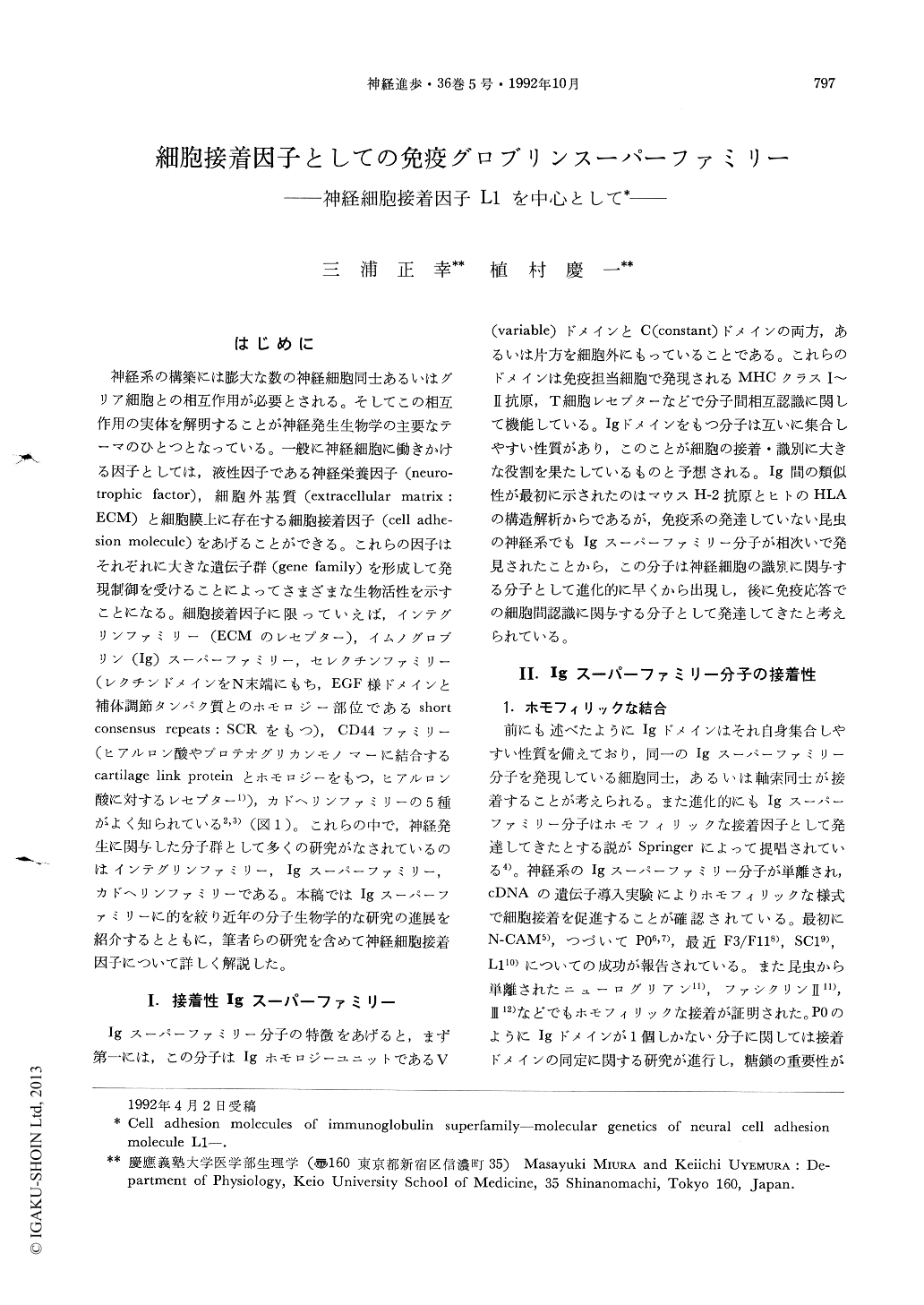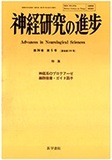Japanese
English
- 有料閲覧
- Abstract 文献概要
- 1ページ目 Look Inside
はじめに
神経系の構築には膨大な数の神経細胞同士あるいはグリア細胞との相互作用が必要とされる。そしてこの相互作用の実体を解明することが神経発生生物学の主要なテーマのひとつとなっている。一般に神経細胞に働きかける因子としては,液性因子である神経栄養因子(neurotrophic factor),細胞外基質(extracellular matrix:ECM)と細胞膜上に存在する細胞接着因子(cell adhesion molecule)をあげることができる。これらの因子はそれぞれに大きな遣伝子群(gene family)を形成して発現制御を受けることによってさまざまな生物活性を示すことになる。細胞接着因子に限っていえば,インテグリンファミリー(ECMのレセプター),イムノグロブリン(Ig)スーパーファミリー,セレクチンファミリー(レクチンドメィンをN末端にもち,EGF様ドメインと補体調節タンパク質とのホモロジー部位であるshort consensus repeats:SCRをもつ),CD44ファミリー(ヒアルロン酸やプロテオグリカンモノマーに結合するcartilage link proteinとホモロジーをもつ,ヒアルロン酸に対するレセプター1)),カドヘリンファミリーの5種がよく知られている2,3)(図1)。これらの中で,神経発生に関与した分子群として多くの研究がなされているのはインテグリンファミリー,Igスーパーファミリー,カドヘリンファミリーである。本稿ではIgスーパーファミリーに的を絞り近年の分子生物学的な研究の進展を紹介するとともに,筆者らの研究を含めて神経細胞接着因子について詳しく解説した。
During the development of nervous system, cell-cell communications are mediated by various molecules named cell adhesion molecules. Among them, a group of cell adhesion molecules found in the nervous system bears strong homologies to immunoglobulins. These molecules are termed the immunoglobulin superfamily. Neural cell adhesion molecule L1 is a 200 KDa glycoprotein which is involved in many critical phenomena such as neuronal migration, adhesion, neurite outgrowth, fasciculation and myelination. Complementary DNA (cDNA) cloning of mouse L1 has revealed that this molecule is a member of the immunoglobulin superfamily. To perform the molecular genetic analysis of L1, we have isolated and sequenced a full-length cDNA encoding the rat and human L1. In both species, the deduced amino acid sequence as a whole shows high homology to mouse sequence. In addition to this complete form of L1, we found an isoform, L1es, which lacks four amino acid residues (RSLE) in the cytoplasmic domain and is derived by tissue-specific alternative splicing. While L1 mRNA was predominantly expressed in the brain, L1cs was found exclusively in peripheral nervous tissue. We transfected rat L1 cDNA into mouse fibroblast L cells. Stable transformants expressing L1 showed uniform cell surface expression of the molecule without phenotypic changes. An L1-expressing transfectant acquired the cell adhesion capacity in a homophilic manner and markedly enhanced neuronal cell adhesion and migration in coculture with rat cerebellar neurons. These results indicate that L1 is involved in many critical periods in neural development through molecular interactions.

Copyright © 1992, Igaku-Shoin Ltd. All rights reserved.


